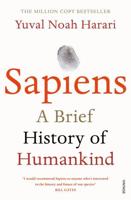Publisher's Synopsis
The ancient state of Rhodes was famous for many things in the Hellenistic period; it emerged as an economic powerhouse thanks to its strategic position on maritime trade routes, its status further bolstered by its proud independence in an era of great kings, and its cultural successes and heritage celebrated by contemporaries as well as later writers. But what did this state look like on the inside, and what social and religious forces contributed to its success? This book explores the origins of the Rhodian state in the late fifth century BC, a union born out of three separate city-states, Lindos, Cameiros, and Ialysos. By digging deep into the abundant epigraphic culture that survives, narratives emerge that tell the stories of these Rhodians and their communities. Despite the political unification and the foundation of a famed and successful capital city, Rhodes-town, the three old centres continued to exhibit distinctive and seemingly lively local religious cultures. What these looked like, and the question of whether they indicate cultic vitality rather than ossification, is considered in detail by examining the local pantheons and the religious dynamics and interactions that characterised and shaped them. Pulling together the diverse threads and local customs, a diachronic religious history of Rhodes is sketched. The role religion played in the social landscape of Hellenistic Rhodes is addressed through a thorough examination of priesthoods. Finally, providing a counterbalance to the institutional side of religion, the lived experience of Rhodian religious associations is depicted. The resulting picture offers a nuanced insight into the religious life and history of a Hellenistic city-state.











